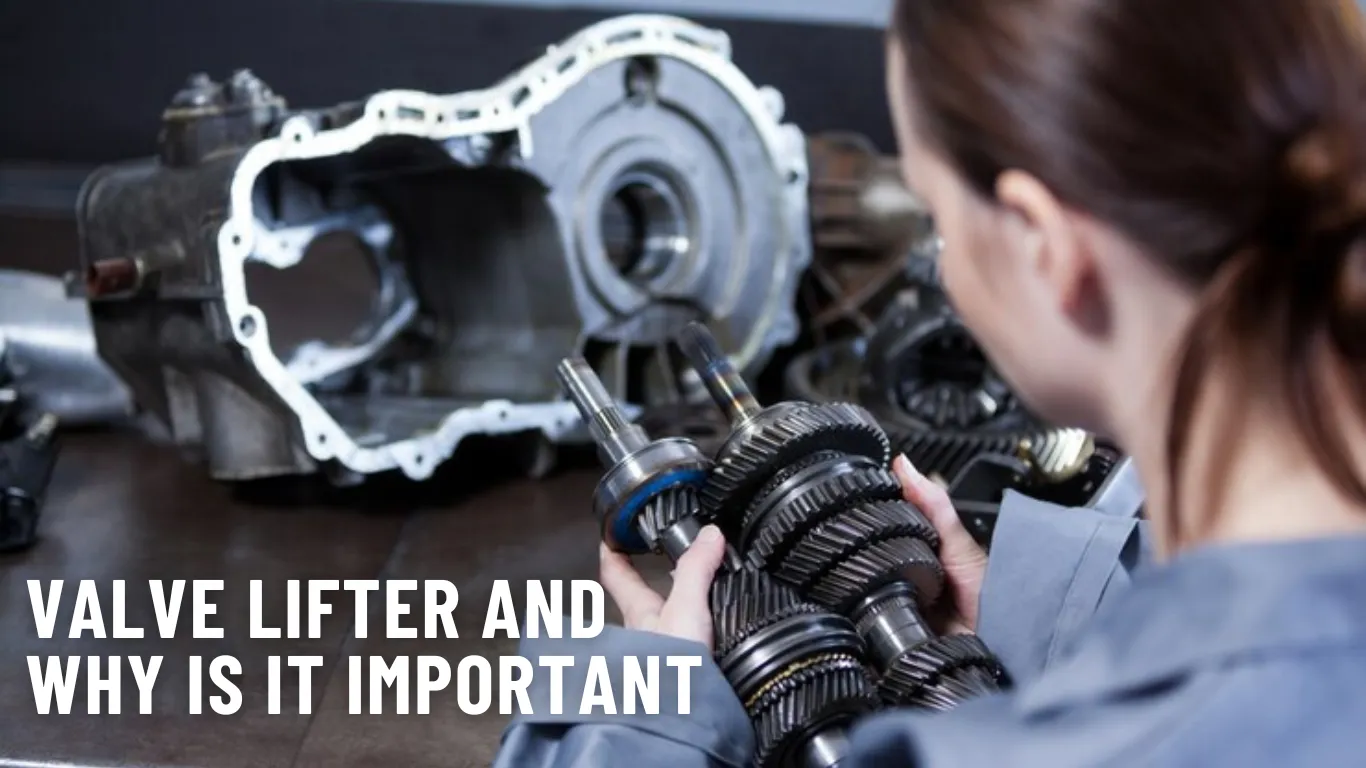When you consider car performance or maintenance, valve lifters most likely not come first. But you know, how your engine runs depends much on these small components. Getting to grips with valve lifters will greatly improve your knowledge and enable you to take better care of your vehicle whether your passion is automobiles, enjoys tinkering with them, or just wants a little more knowledge about what’s occurring beneath the hood.
Table of Contents
What Exactly Is a Valve Lifter?
Found in an internal combustion engine, a valve lifter also known as a tappet or cam follower is a small cylindrical component The valvetrain system opens and closes the engine’s valves in concert with the camshaft. This procedure removes exhaust emissions while allowing in air and fuel.
spinning action into the straight motion needed to operate the engine’s valves. Value lifters come in hydraulic, solid, and roller varieties among other forms. Though they all want to do the same fundamental task, each one has unique qualities that distinguishes it.
Though they seem like a minor element, valve lifters are really vital for maintaining the engine’s effective working condition. Key for obtaining the maximum performance out of the engine, they are thus very important in maintaining the valves of the engine running at the correct timing.
Why Are Valve Lifters Important?
Efficiency and lifetime of an engine depend on valve lifters. They guarantee that the valves open and close exactly to let the right air-fuel combination into the combustion chamber. This exact timing helps the engine to run with fuel economy and power production.
The performance of the engine might drop greatly without correctly operating valve lifters. Problems include low engine power, bad fuel economy, or even engine failure might surface. Thus, the health of the engine in your automobile depends on keeping and, if needed, replacing valve lifters.
Valve lifters also help other engine parts wear less. They lengthen the lifetime of the camshaft and other components by guaranteeing smooth valve functioning, therefore minimising stress on them and lowering the possibility of later expensive repairs.
Understanding the Different Types of Valve Lifters
There are several kind of valve lifters, each having benefits and drawbacks. Knowing this will enable you to decide on upgrades or maintenance with knowledge.
Hydraulic Valve Lifters
Because hydraulic lifters can self-adjust, they are becoming very popular. They automatically offset variations brought about by temperature and wear as they employ oil pressure to keep zero clearance in the valvetrain. This self-correcting lowers maintenance requirements and noise.
Although hydraulic lifters are handy, they need a constant oil supply to function properly. Low or dirty oil can cause lifter dysfunction, producing noise and lower engine performance.
Solid Valve Lifters
Designed simpler than hydraulic lifters, solid lifters also known as mechanical lifters—are To achieve the proper clearance, they must be manually adjusted; so, frequent maintenance is not only necessary but also helps to guarantee more exact valvetrain performance.
Because they can tolerate high RPMs and provide superior control over valve movement, these lifters are frequently used in high-performance engines. For certain users, nevertheless, the requirement for constant modification might be a drawback.
Roller Valve Lifters
By using a wheel or roller at the contact point with the camshaft, roller lifters minimise friction and enable more aggressive cam profiles. They improve engine efficiency and power, so they are commonly found in contemporary and high-performance engines.
Over flat tappet designs, roller lifters can provide better performance and lifetime. They do, however, usually cost more and need precise alignment to avoid damage.
How to Identify Valve Lifter Issues
Early identification of valve lifter issues will prevent expensive repairs and maintain engine performance. Here are some typical indicators your valve lifters could require maintenance:
Unusual Engine Noise
Unusual engine tapping or ticking noises indicate one of the early indicators of valve lifter problems. Often characterised as a “ticking” sound, this noise might point to improper lifter performance.
If you hear such noises, you really should look into it more. All of which call for quick treatment include the noise coming from inadequate oil pressure, blocked lifters, or too much wear.
Reduced Engine Performance
When your car appear less responsive or lack power, valve lifters may be the source of problems. Malfunctioning lifters can influence valve timing, therefore affecting engine efficiency and power production.
Regular maintenance inspections can help find and fix such performance problems before they become more major concerns.
Increased Fuel Consumption
Another indication of valve lifter problems is rising fuel consumption without a known reason. Should the lifters not be performing as expected, the engine may not burn gasoline as well, therefore increasing fuel consumption.
Early addressing of lifter issues can assist to restore normal fuel consumption levels and save more engine damage.
Maintaining Your Valve Lifters
Maintaining the best state of your engine depends on proper valve lifters’ maintenance. These pointers will enable you to keep them somewhat good:
Regular Oil Changes
Hydraulic lifters depend on your engine’s oil being clean and at the correct level. Frequent oil changes provide the lifters the lubrication required for proper operation.
Equally crucial is choosing the right kind of oil for your car based on advice in the owner’s handbook. Inappropriate lifter action might result from an oil whose viscosity is too low.
Periodic Inspections
Examining your valve lifters during regular maintenance will assist you identify possible problems early on. Look for wear, damage, or incorrect adjustment; then, take quick care of any issues.
Regular changes are required for solid lifters to keep the proper valve clearance and guarantee best performance.
Addressing Noisy Lifters
If you hear noise from your lifters, don’t discount it. Look at the source; it may be anything from low oil levels to more severe mechanical problems. Quick intervention can stop more engine damage.
Sometimes applying an oil additive meant to clean lifters can enhance performance and lower noise level. Still, manufacturer instructions should be followed and one should not rely just on additives.
Comparing Valve Lifters to Other Engine Components
Among the several parts of an engine’s valvetrain system are valve lifters. Knowing their relative performance to other regions helps one to better appreciate their importance and function.
Camshaft
TClosely coordinating with valve lifters, the camshaft controls their motion and timing. Although lifters translate the rotational action of the camshaft into linear motion, the camshaft itself controls valve opening and closing.
For best engine performance, both parts must cooperate, thereby stressing the need of correct maintenance for both.
Rocker Arms
From the lifters to the valves, rocker arms translate the action. Essential components of the valvetrain, they provide effective valve performance. Like lifters, rocker arms need frequent examination for wear and appropriate adjustment to run as intended.
Pushrods
Some engine models link the lifters to the rocker arms via pushrods. Crucially important for valve functioning, they move the motion from the lifters to the arms. Maintaining a smooth-running engine depends on keep pushrods correctly aligned and damage-free.
Step-by-Step Guide to Replacing Valve Lifters
For those with mechanical skill, replacing valve lifters may be a satisfying do-it-yourself effort. This detailed guide will enable you to negotiate the process:
Step 1: Preparation
Sort all required tools and replacement components before beginning. New lifters, a torque wrench, a socket set, maybe gaskets and oil will all be needed.
Make sure the engine is cold; next, unplug the battery to avoid any electrical dangers during the repair.
Step 2: Accessing the Lifters
Usually, you’ll have to remove the pushrods, rocker arms, and valve covers to reach the lifters. Your vehicle’s engine design will affect this somewhat; so, refer to the service manual for particular information.
Make sure you record every removed component and where they should be reassembled.
Step 3: Replacing the Lifters
Take great care removing the old lifters and substituting fresh ones. Drop nothing into the engine; this can seriously harm the engine.
Reassemble the valvetrain components in reverse order after the new lifters are in place to guarantee all parts are torqued to specification.
Step 4: Final Checks
After reassembling, double-check all connections and refill the engine with oil if necessary. Reconnect the battery and start the engine, listening for unusual noises that might indicate an issue.
A successful lifter replacement should result in smoother, quieter engine operation.
Exploring Real-Life Examples
Case Study 1: Hydraulic Lifter Success
A auto enthusiast discovered weird ticking noises and lower power in their car. They changed the oil and applied a targeted cleaner after spotting the problem as filthy hydraulic lifters, therefore restoring smooth engine performance.
Case Study 2: Solid Lifter Adjustment
Examining a performance decline in a historic automobile, a do-it-yourself technician found that incorrectly tuned solid lifters were the cause. The engine’s power and efficiency much increased following the required changes.
Case Study 3: Roller Lifter Upgrade
To improve their high-performance engine, a performance fan converted to roller lifters. Modern lifter designs clearly exhibit their advantages as the improvement produced less friction, increased efficiency, and better handling of demanding cam profiles.
Conclusion
When they seem to be little, unimportant components, valve lifters are rather important for engine performance. Knowing about valve lifters is valuable whether your passion is cars and you want to know every detail of your car, a do-it-yourself technician working on a project, or a car owner wanting to keep their ride.
Understanding their purpose, kinds, and maintenance requirements helps you to guarantee that your engine performs effectively and without problems. Frequent inspections and correct maintenance help to avoid expensive problems and maintain your car’s optimal performance.
If you would want further knowledge about car maintenance and repair, think about reading automotive manuals or enrolling in a basic mechanics course. Have fun driving!
Maintaining valve lifters is essential for correct engine maintenance overall and may significantly affect the lifetime and performance of your car. Regular wear inspections and quick resolution of any faults help to avoid more major concerns later on. Following a detailed guide and heeding rapid advice will also help those courageous enough to try a lifter replacement on their own guarantee a good repair.
Knowing their purpose, kinds, and maintenance requirements helps you to make sure your engine performs effectively and without problems. Frequent inspections and correct maintenance help to avoid expensive problems and maintain your car’s optimal performance.
FAQs
-
What Causes Valve Lifter Noise?
Valve lifter noise is often caused by insufficient oil pressure, dirty oil, or lifter wear. Addressing these issues through regular maintenance can prevent or resolve the noise.
-
Can I Drive with a Bad Lifter?
While driving with a bad lifter is possible, it’s not recommended. Continued use can lead to further engine damage and costly repairs. Prompt attention to lifter issues is always advisable.
-
How Often Should Valve Lifters Be Checked?
Regular checks during routine maintenance are ideal. For hydraulic lifters, this includes ensuring proper oil levels. Solid lifters may require more frequent inspections due to their need for manual adjustment.
-
Quick Tips for Valve Lifter Care
Use High-Quality Oil: Opt for reputable brands and the correct viscosity to ensure lifter longevity.
Follow Maintenance Schedules: Adhere to your vehicle’s maintenance intervals for oil changes and inspections.
Listen to Your Engine: Pay attention to unusual noises, as they can be early indicators of lifter or other engine issues.


 Blog
Blog